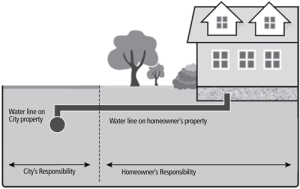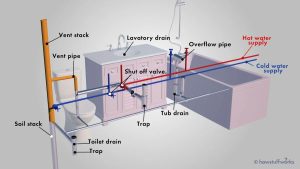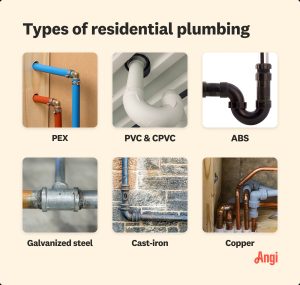


Plumbing in Eastern Ontario Homes
Why Plumbing Matters
Plumbing is one of the most essential systems in any home, handling the delivery of clean water and the safe removal of wastewater. In Eastern Ontario, where housing stock ranges from historic stone farmhouses to new subdivisions, plumbing systems vary widely. Knowing the type, age, and condition of a home’s plumbing is key for safety, efficiency, and long-term maintenance.
Supply Line Materials
1. Galvanized Steel
-
Description: Steel pipes coated with zinc, used widely before the 1950s.
-
Pros: Strong, long-lasting when new.
-
Cons: Corrodes over time, restricting water flow; prone to leaks and discolouration.
-
Regional Use: Often found in century homes around Belleville, Kingston, and PEC — usually in need of replacement.
2. Copper
-
Description: Standard supply line material since the 1960s.
-
Pros: Durable, corrosion-resistant, long lifespan, adds resale value.
-
Cons: More expensive; can develop pinhole leaks if water is very acidic.
-
Regional Use: Still the gold standard in many homes across Eastern Ontario.
3. Polybutylene (PB)
-
Description: Plastic piping used from the late 1970s to 1990s.
-
Pros: Cheap and easy to install at the time.
-
Cons: Known to degrade and fail, especially at joints. Often a red flag for insurance companies.
-
Regional Use: Found in some mid-1980s homes; many have since been retrofitted.
4. PEX (Cross-Linked Polyethylene)
-
Description: Flexible plastic tubing, now the most common modern material.
-
Pros: Affordable, flexible, resistant to freezing and scale buildup, quick to install.
-
Cons: UV-sensitive; must be protected if exposed.
-
Regional Use: Standard in new builds and renovations across Hastings County, Quinte West, and PEC.
Drainage and Waste Lines
1. Cast Iron
-
Description: Heavy, durable pipes used in older homes.
-
Pros: Long-lasting, quiet.
-
Cons: Prone to rust, cracking, and root intrusion; very heavy and costly to replace.
-
Regional Use: Common in pre-1960s homes, especially in city centres.
2. Clay Tile
-
Description: Clay sewer lines often used underground.
-
Pros: Very durable if undisturbed.
-
Cons: Brittle, easily cracked, roots infiltrate joints.
-
Regional Use: Often found in heritage homes; replacement with PVC is common.
3. ABS and PVC Plastic
-
Description: Black (ABS) or white (PVC) plastic pipes, standard since the 1970s.
-
Pros: Lightweight, affordable, resistant to corrosion, long-lasting.
-
Cons: Can crack if improperly installed; ABS more prone to UV degradation.
-
Regional Use: Standard for drain, waste, and vent lines in modern builds.
Fixtures and Distribution Systems
-
Shut-Off Valves: Modern homes feature shut-off valves at each fixture, while older homes may not.
-
Manifold Systems: Common in PEX installations, allowing each fixture to have its own supply line, much like an electrical panel.
-
Water Heaters:
-
Conventional Tank: Still the most common in Eastern Ontario (gas, propane, oil, or electric).
-
Tankless (On-Demand): Growing in popularity for energy efficiency and endless hot water.
-
-
Sump Pumps: Installed in basements to prevent flooding, especially important in areas with high water tables.
Climate and Regional Considerations
-
Freeze Protection: With cold winters, pipes in exterior walls or unheated spaces must be insulated to prevent freezing.
-
Well and Septic Systems: Common in rural properties. Wells supply potable water, while septic systems manage waste on-site. Buyers should always confirm testing and maintenance history.
-
Municipal Water and Sewer: Standard in urban centres like Belleville and Trenton, offering convenience and fewer maintenance concerns.
Key Buyer Considerations
-
What material are the supply and waste lines?
-
How old is the water heater?
-
Is there a sump pump or backflow prevention system?
-
For rural homes: When were the well and septic last serviced or inspected?
👉 In summary, plumbing in Eastern Ontario homes spans from galvanized and cast iron in heritage properties to PEX and PVC in modern builds. Understanding these systems helps homeowners avoid costly issues and ensures the home runs smoothly for years to come.

